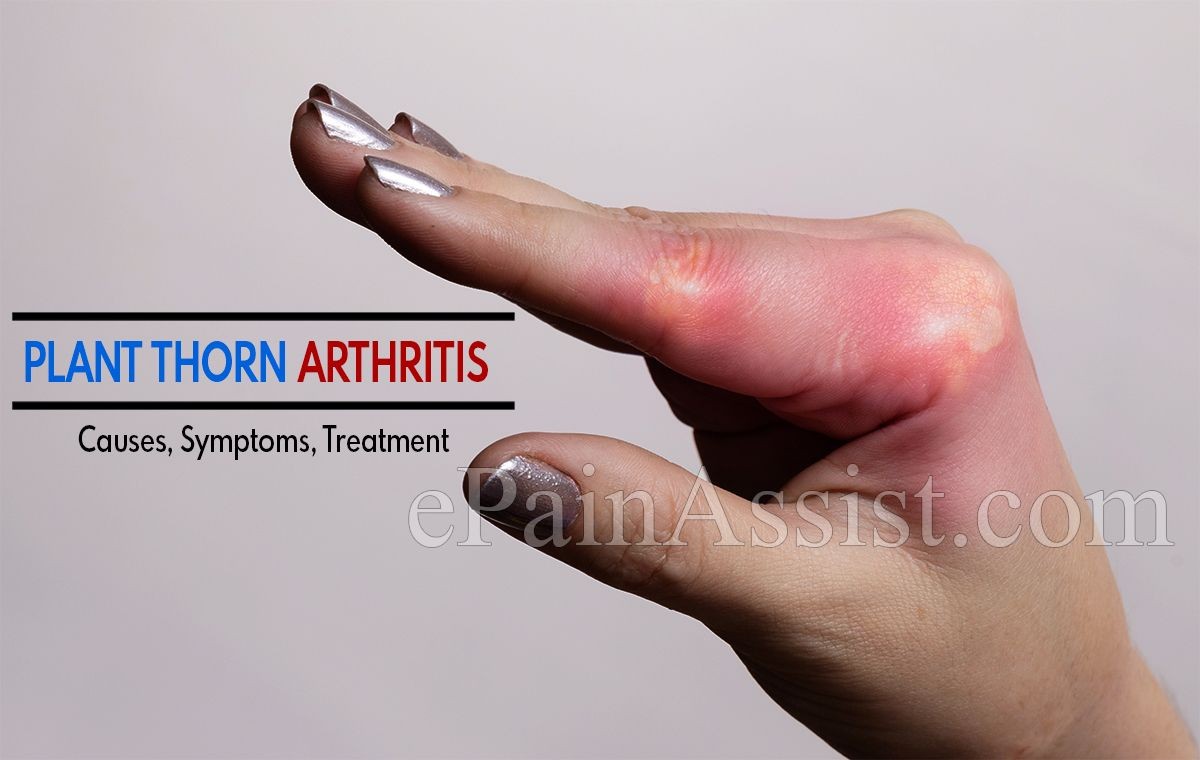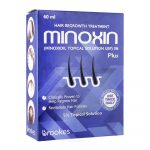
Contents
- 1 Plant Thorn Arthritis (Plant Thorn Synovitis)
- 1.0.1 What plants cause plant thorn arthritis?
- 1.0.2 What are risk factors for plant thorn arthritis?
- 1.0.3 What are the symptoms of plant thorn arthritis?
- 1.0.4 Diagnosis of plant thorn arthritis
- 1.0.5 What joints are typically involved in plant thorn arthritis?
- 1.0.6 What is the treatment for plant thorn arthritis?
- 1.0.7 What is the prognosis for plant thorn arthritis?
- 1.0.8 Is it possible to prevent plant thorn arthritis?
- 1.0.9 Subscribe to MedicineNet’s Arthritis Newsletter
Plant Thorn Arthritis (Plant Thorn Synovitis)
Pathology photo showing multinucleated giant cell granulomatous reaction (triangle point), synovial hyperplasia, fibrosis, and adjacent foreign vegetable matter (arrow with thorn fragments) with hematoxylin and eosin stain (H&E stain). Kindly provided by Xiaohui (Sheila) Zhao, MD, PhD, of the Department of Pathology and Laboratory Medicine, University of California, Irvine Medical Center.
Plant thorn arthritis is a noninfectious inflammation of a joint resulting from a thorn puncturing the joint and leaving residual plant matter lodged within. The plant thorn fragments cause localized inflammation in the joint lining tissue, leading to swelling, stiffness, loss of range of motion, and pain. The joint lining tissue is called the synovium. This tissue’s inflammation is known as synovitis. Plant thorn arthritis is also referred to as plant thorn synovitis.
What plants cause plant thorn arthritis?
The plants commonly causing plant thorn arthritis are those that produce thorns. These plants include palm trees, roses, black-thorn shrubs, cacti, bougainvillea, yucca, pyracantha, plum trees, and mesquite trees. Exposure to these plants is the greatest risk factor for plant thorn arthritis.
What are risk factors for plant thorn arthritis?
Risk factors for plant thorn arthritis include:
- Gardening, especially without gloves
- Exposure to thorn-bearing plants, including:
- Palm trees
- Roses
- Black-thorn shrubs
- Cacti
- Bougainvillea
- Yucca
- Pyracantha
- Plum trees
- Mesquite trees
What are the symptoms of plant thorn arthritis?
Plant thorn arthritis causes the involved joint to be:
- swollen,
- reddish,
- stiff,
- painful.
The joint loses its full range of motion and is often tender. These symptoms may only be noticed days after the initial thorn puncture. It is not uncommon for the person affected by plant thorn arthritis to remove the thorn immediately after the puncture and then develop the arthritis days or weeks later without recalling the previous puncture. This is because the original thorn leaves behind small fragments of thorn vegetable matter that gradually cause the inflammation of plant thorn arthritis. This form of arthritis becomes chronic until properly treated.
QUESTION
Diagnosis of plant thorn arthritis
Plant thorn arthritis is suspected in a patient with an inflamed joint after being punctured by a plant thorn. This is true even if the patient recalls removing the thorn because tiny fragments of thorn matter can remain behind, leading to chronic inflammation. Joint fluid removal (joint aspiration) is performed to rule out bacterial or fungal infection. The diagnosis of plant thorn arthritis requires either radiology testing to detect thorn fragments within the joint or surgical removal of the fragments for microscopic identification in the laboratory. Imaging techniques such as MRI, HR-CAT scanning, and ultrasound can sometimes visualize tiny thorn pieces. However, surgical removal from the joint tissue is often necessary for detection.
In the pathology department, the affected joint lining tissue (synovium) is examined using microscopes. The tissue exhibits a characteristic reaction called granulomatous synovitis, with the microscopic thorn fragments appearing shiny (birefringent) to the pathologist when viewed under a polarized light microscope.
Pathology photo showing thorn material (blue and yellow birefringent material) visualized under polarized light microscopy. Kindly provided by Xiaohui (Sheila) Zhao, MD, PhD, of Department of Pathology and Laboratory Medicine, University of California, Irvine Medical Center.
Plant thorn arthritis requires operative intervention, typically performed by orthopedic or plastic surgeons.
What joints are typically involved in plant thorn arthritis?
Plant thorn arthritis typically affects a single joint — the joint pierced by the plant thorn. The most commonly affected joints include the small joints of the hands (metacarpophalangeal joints, proximal interphalangeal joints), feet, elbows, knees, and ankles. These joints are at risk of being stabbed by thorns when coming into contact with thorny plants.
What is the treatment for plant thorn arthritis?
Puncturing a joint with foreign material like a plant thorn can lead to bacterial or fungal infection of the joint. It is crucial to exclude these infections by removing joint fluid and conducting laboratory testing. While plant thorn arthritis is noninfectious, infection can occur separately from the thorn puncture and may require urgent antibiotic treatment.
Anti-inflammatory medications can alleviate inflammation, but chronic arthritis will develop if the thorn fragments remain in the joint. Surgical resection of the thorn fragments, known as synovectomy with joint lavage, is necessary to eliminate inflammation and prevent permanent joint damage. There is no specific medication or home remedy for plant thorn arthritis.
Surgical images showing inflamed joint lining tissue (synovium) from the author’s right third metacarpophalangeal joint, with a 1 mm thorn tip from the common palm tree surgically removed. Kindly provided by Gabriel Trainer, MD, and Neil Jones, MD, orthopedic hand surgery, University of California, Irvine Medical Center.
Surgical images of joint lining tissue (yellowish synovium) resected from the author’s right third metacarpophalangeal joint after thorn puncture with a 1 mm thorn tip from the common palm tree. Surgical resection of the inflamed tissue (synovitis) and thorn fragments is key to curing plant thorn arthritis. Kindly provided by Gabriel Trainer, MD, and Neil Jones, MD, orthopedic hand surgery, University of California, Irvine Medical Center.
What is the prognosis for plant thorn arthritis?
After undergoing synovectomy for plant thorn arthritis, the joint tends to heal well without residual problems. Early synovectomy improves outcomes, preventing cartilage damage caused by chronic inflammation. Physical therapy rehabilitation exercises can aid in restoring normal joint function.
Is it possible to prevent plant thorn arthritis?
Exposure to thorny plants should be avoided to prevent plant thorn arthritis. Wearing protective clothing and gloves and exercising caution around thorny plants can be helpful in preventing this condition.
Subscribe to MedicineNet’s Arthritis Newsletter
By clicking "Submit," I agree to the MedicineNet Terms and Conditions and Privacy Policy. I also agree to receive emails from MedicineNet and understand that I may opt out of subscriptions at any time.
Stevens, K.J., et al. "Imaging of Plant-Thorn Synovitis." Skeletal Radiol 29 (2000): 605-608.
Sugarman, M., D.G. Stobie, F.P. Quismorio, R. Terry, and V. Hanson. "Plant Thorn Synovitis." Arthritis Rheum 20.5 (June 1977): 1125-1128.
Sugarman, M., D.G. Stobie, F.P. Quismorio, R. Terry, and V. Hanson. "Plant Thorn Synovitis." Arthritis Rheum 20.5 (June 1977): 1125-1128.


